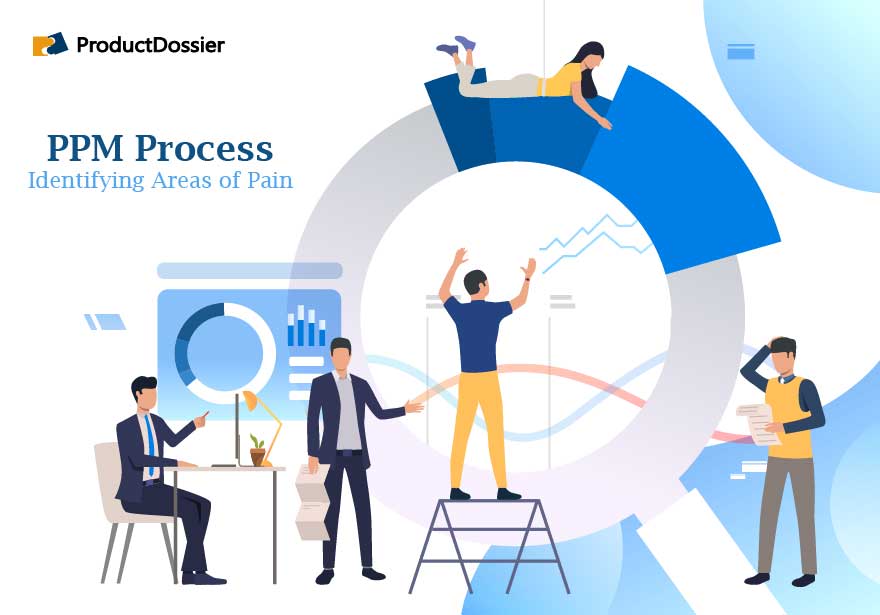In this blog we will explore the origins of Project Portfolio Management and how it has come into its fore in recent years. We will discuss the inefficiencies when managing projects and the many demands that are now placed upon project orientated businesses. We will also look at the key challenges for successful project delivery.
How is Project Portfolio Management Evolving?
Project Portfolio Management has its roots embedded within the Project Management and draws heavily on their key disciplines and methods. Most PPM software we see today have been developed from project management software tools. However, Project Portfolio Management also borrows from the financial and investment community, as a means of managing, prioritizing and balancing projects as business investments.
Although, PPM software was initially adopted within IT departments, in recent years it has become a mainstream feature throughout the organisation and offers all businesses, independent of shape, size or focus with a simple framework to select, prioritize and deliver projects and program. The key emphasis of project portfolio management is to achieve an overall balanced investment in projects.
Measuring Project Success
- Quite often businesses are guilty of a limited view when it comes to measuring project success, by focusing on:
- When will the project be finished?
- How much has the project cost?
- Is the project to specification?
However, it is important that executives realize, projects form the future profitability and ultimately the success of their organisation. Consequently, there is growing interest on the part of business leaders in how projects are performing and impacting the bottom line. Typical questions are now focused on understanding:
- Do we have the right balance of projects to ensure we can deliver our strategy?
- Are they delivering against corporate objectives?
- What is the ROI/ROO?
- Do we have the right mix of low, medium and high-risk project investments?
- What resources do we need to complete the portfolio as planned?
- What are the alternative scenarios if the strategy changes?
- What is the status of each project and program?
The Role of Projects within the Business
In today’s economy there needs to be a realization that projects represent a significant investment for an organisation and attention needs to be much more focused on the value of those projects to the business and how they are the key vehicle in achieving the overall business strategy.
Projects should no longer be viewed as ‘one-off’ isolated entities, but as a core facet of the business, driving the future profitability of the business. In fact, the effectiveness of an organisations project management process can make or break the bottom-line of the business.
Bearing this in mind, stakeholders need to demand greater accountability in the way projects are selected, managed and delivered. Coupling this with the increasing complexity of managing multidimensional project environments, projects must become subjected to high levels of rigor and accountability.
Inefficiencies in Business Today
Before we look at how we can implement a successful project process it is important to realize many of the inefficiencies that exist within business today. The purpose of a project is to advance one or more business objectives. However, there are typically many problems facing businesses when trying to achieve this:
- No real-time view of project information
- Project data is out of date or inaccurate and there is no formal system of collating project data
- Organisations rely on multiple versions of complex spreadsheets which are prone to error
- Limited visibility and control over the business’s capability:
- Difficulty re-prioritizing resources for any new business
- Inability to dynamically model scenarios based on up-to-date information
- No real-time view of resource capability
- Lack of control/ information flow over projects:
- Little or no understanding of the business value of individual projects
- Projects being executed in isolation to the business
- Limited ability to make course correction with failing projects
- Little or no method of reporting project health and status
- No consistent method of project planning
- Fragmented planning and resource processes
- Project-centric approach to the project delivery process
What is the main challenge for successful project delivery?
In summary, the main challenge facing businesses in achieving successful project delivery is:
Project delivery within an enterprise environment involves the multifaceted collaborations of the business’s ability to successfully execute the key project components seamlessly and as a natural extension of the business rather than as separate, alien and conflicting entities.
PPM seeks to address this issue by enabling the business to align resources and project investments with corporate objectives, PPM is the bridging that brings together the strategic and the operational.




